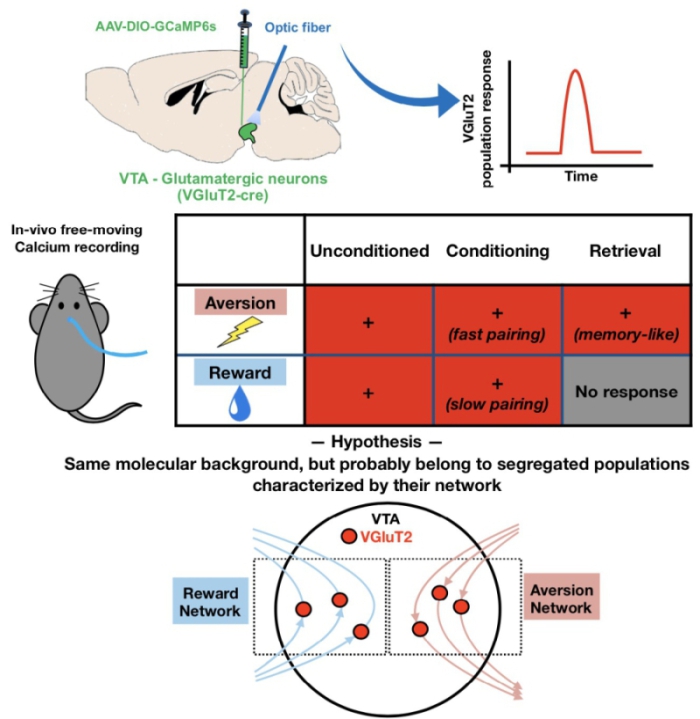Researchers Decipher Response of Glutamatergic VTA Neurons during Positive and Negative Emotional Behaviors
The VTA (Ventral Tegmental Area) is a midbrain structure well known for its role in aversive and rewarding behaviors. Recently, the function of VTA glutamatergic neurons puzzling the scientific community, while direct activation of VTAVGluT2+ neurons leads to rewarding behaviors, and stimulate VTAVGluT2+ neurons outputs leads to aversive behaviors.
To answer this paradox, Prof. WANG Liping’s group, from the Shenzhen Institutes of Advanced Technology (SIAT) of the Chinese Academy of Sciences, used in-vivo free-moving calcium imaging by fiber photometry to investigate how the VTAVGluT2+ neuronal population was recruited by unconditioned\conditioned aversive and rewarding stimulation.
The paper entitled “Characterization of glutamatergic VTA neural population responses to aversive and rewarding conditioning in freely-moving mice” has been published in Science Bulletin, May 13, 2019. In this study, the research group successfully characterized the response of VTA glutamatergic neurons during aversive and rewarding stimulation, by using calcium imaging.
Followed by a memory test, the exposed animals either to a reward conditioning or to an aversive conditioning task.
The group demonstrated that VTAVGluT2+ response was getting strong only in the case for aversive memories, not for rewarding memories. These results, in addition with a precise brain mapping work, suggested that VTAVGluT2+ neurons responding to reward or aversive conditioning may belong to different subpopulations characterized by their associated network.
These results provided a new vision of appetitive and aversive network, and demonstrated that the neurons molecular background is not the sole and the only key to understand a behavior. Understanding how these similar populations are recruited shed a new light on positive and negative emotional behaviors.

Montardy et al. characterized two subpopulations of VTAVGluT2+ neurons responding differently to aversive and rewarding stimulation. (Image by LIU Xuemei)
CONTACT:
ZHANG Xiaomin
Email: xm.zhang@siat.ac.cn
Tel: 86-755-86585299
| Download the attachment: |
|
|